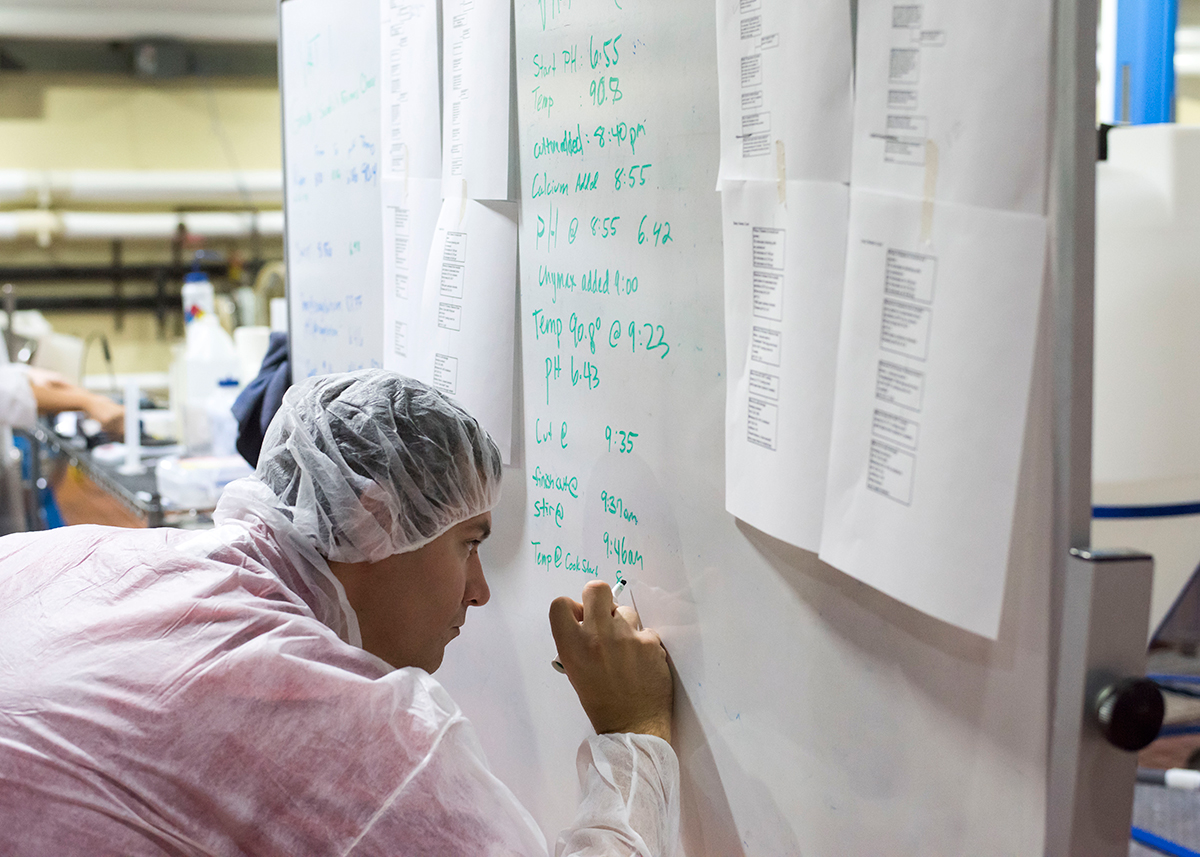Gouda news: Workshop churns out future cheesemakers
By Blaine Friedlander


Pouring milk into vats, then brining, ripening, dipping and taking notes, more than a dozen students produced delicious cheese at Cornell’s sixth Science of Cheese Making and Vat Pasteurization workshop presented by the Department of Food Science Oct. 27-28.
“Here in New York, there is an upwelling of interest to make artisanal cheese on the farmstead,” said Brian Bailey, of Yancey’s Fancy Cheese. Bailey and Rob Ralyea, Cornell senior food science extension associate, taught the workshop to people new to the industry, some of whom intend to make it a business.
At the hands-on workshop, Cornell students and food industry members made Gouda, baby and lacy Swiss, and farmer’s cheese while learning the science behind the process in Stocking Hall’s recently refurbished Food Development and Processing Laboratory. Students also learned sensory evaluation and detecting defective milk.
“Our goal is to raise everybody up. This is a basic course. If you’re going into the cheese-making industry, and if you don’t know what you’re doing, you can make people ill,” explained Bailey. “We want people armed with information, not superstition and ignorance. We want them to have the tools and the knowledge to be successful.”
Cheese has become an important part of the state’s economy. In 2014, New York’s dairy farmers produced 13.7 billion pounds of milk, according to New York State Department of Agriculture and Markets statistics, and 4.3 billion pounds was used to make 784.6 million pounds of cheese. The wholesale value of cheese in New York is estimated at $1.7 billion for 2014 – a year of record high prices.
Last year, the state’s cheese makers manufactured 126.6 million pounds of cheddar cheese, up from 85.1 million pounds in 1991. About 25 years ago, New York’s cheesemakers produced about 5.36 million pounds of miscellaneous and specialty cheeses – which includes Gouda, feta and artisanal varieties, according to the Department of Agriculture and Markets. Now that market booms with 27 million pounds in 2014.
This program, part of a series of workshops, allows individuals to earn a cheesemaking certificate from Cornell Dairy Foods Extension. For workshop participants, Ralyea explained that food safety is the top priority.
“We emphasize food safety to our cheesemakers, because we don’t want consumers to get sick – that hurts the industry,” he said. “This course is for someone who doesn’t have a lot of experience and then we can teach the complexities of what’s going on in the vat.”
Consumers are rapidly gaining a cheese education and demanding variety.
“Ten years ago it was hard to find a large variety of cheese,” said Bailey. “The American palate is getting more sophisticated, especially here in New York – a dairy state. People are open to new things. There is a resurgence going on with the artistry – as well as getting the science right.”
Media Contact
Get Cornell news delivered right to your inbox.
Subscribe